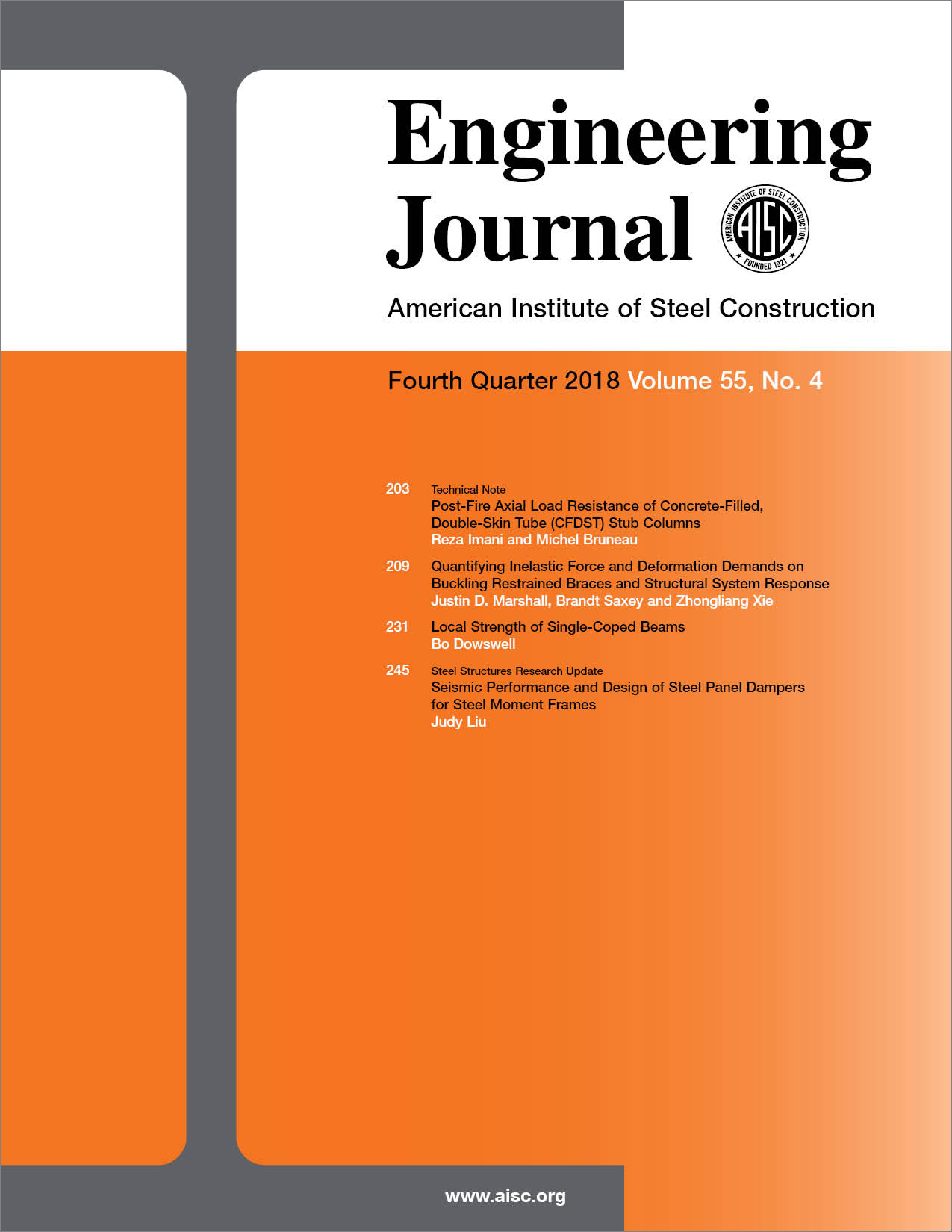Quantifying Inelastic Force and Deformation Demands on Buckling Restrained Braces and Structural System Response
DOI:
https://doi.org/10.62913/engj.v55i4.1138Keywords:
buckling-restrained brace, ductility in steel structures, overstrength demands, nonlinear analysisAbstract
Buckling-restrained braced frames (BRBF) have become a very popular lateral-resisting system due to their balanced, full hysteresis and the ability to tailor stiffness, within limits, and strength to meet specific design requirements. This paper reports the results of an analytical investigation on the performance of buckling-restrained braces (BRB) and the global performance of BRBF with a focus on the ductility and overstrength demands on the braces. Nonlinear analytical models of various three- and six-story steel frames were subjected to a suite of earthquake records to determine the demands on the BRB elements and the overall frame response. The structure variations include the location (i.e., seismic hazard), seismic importance factor, Ie, brace configuration (chevron versus single diagonal), and BRB yielding core length. The analysis also investigates the ratio of the impact of an error in the approximation of the BRB elastic stiffness on the system performance.

